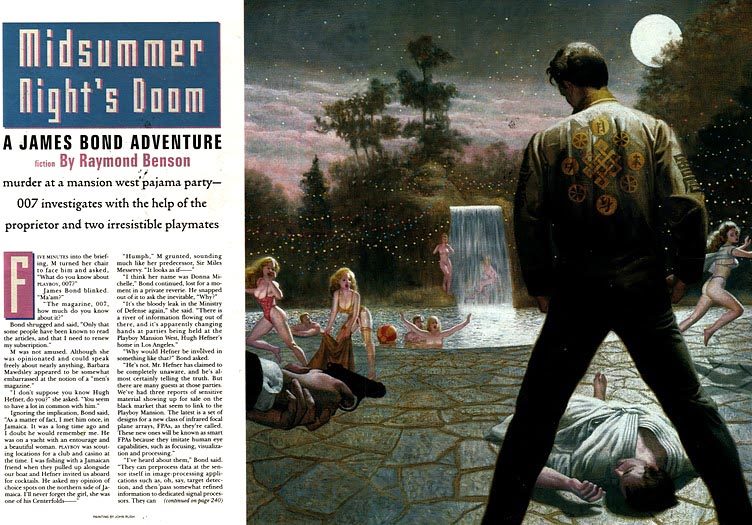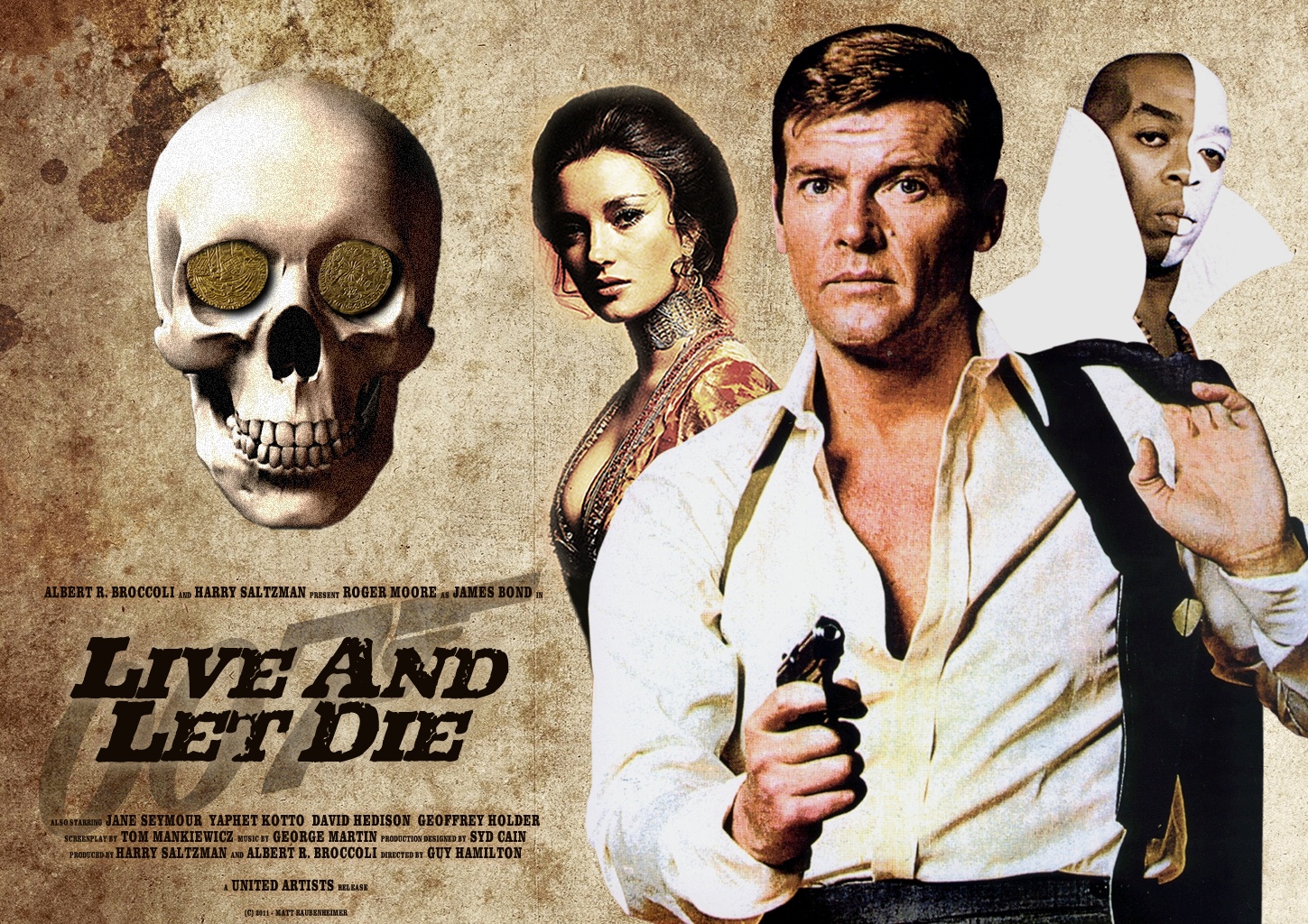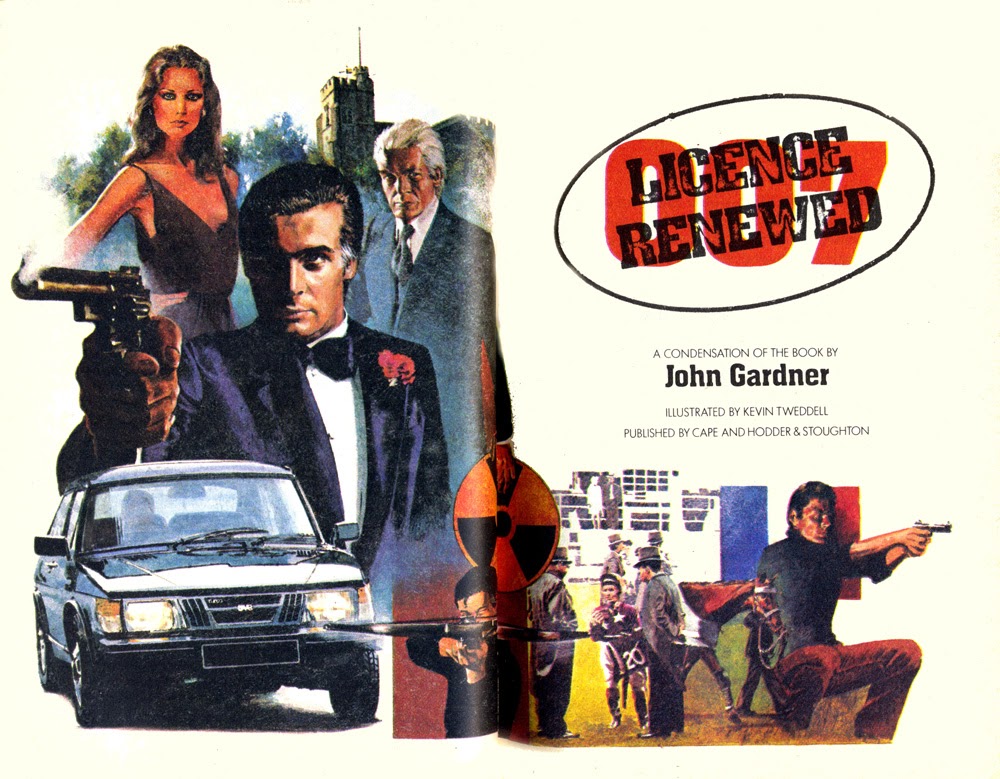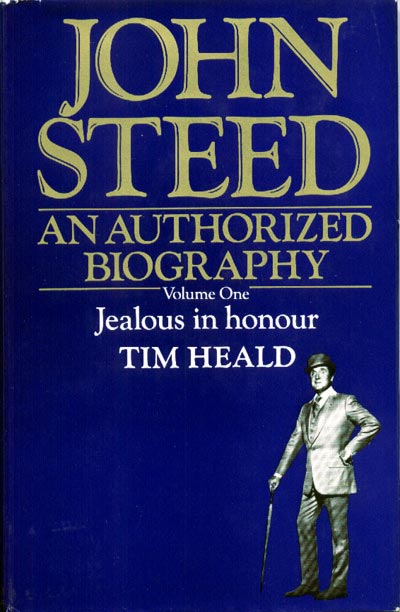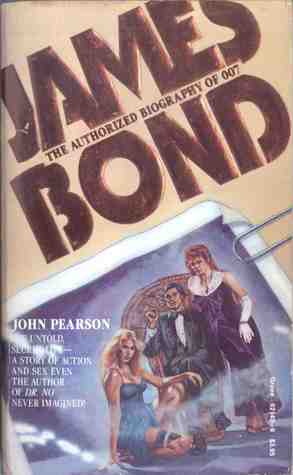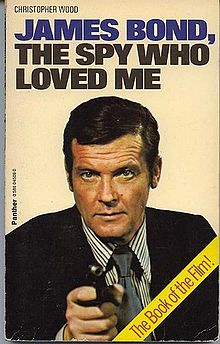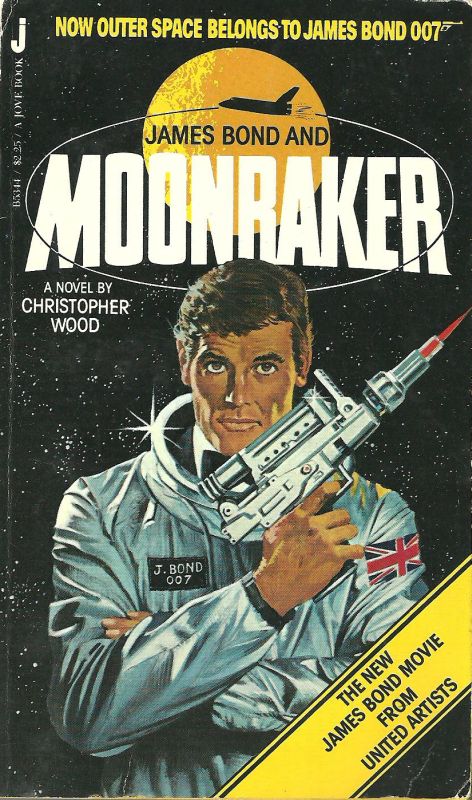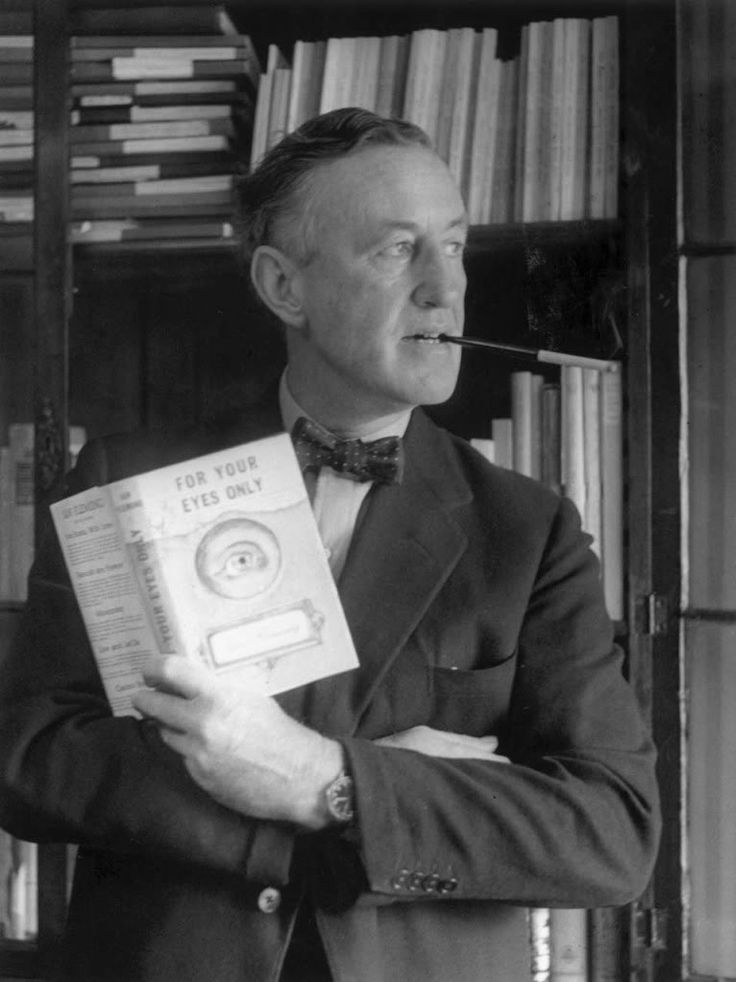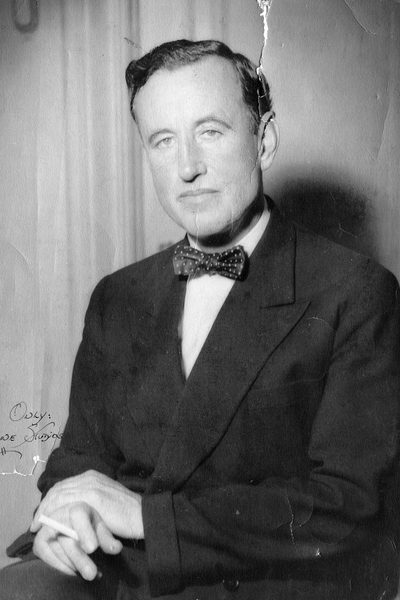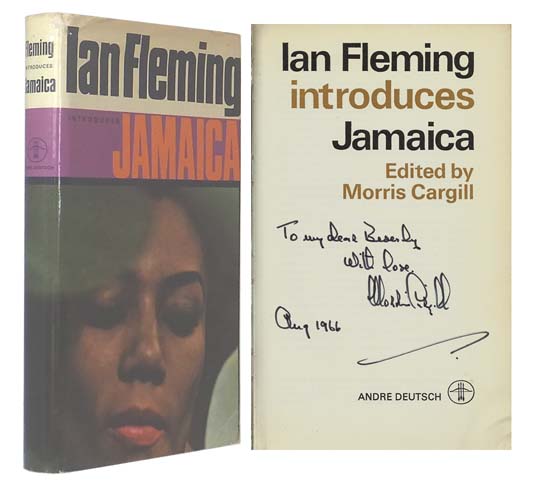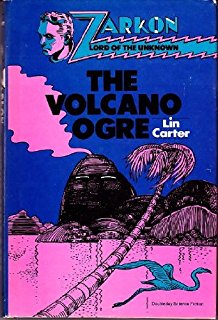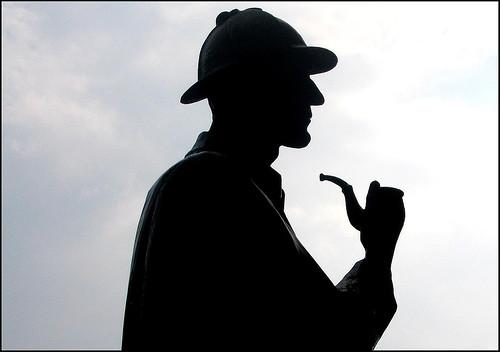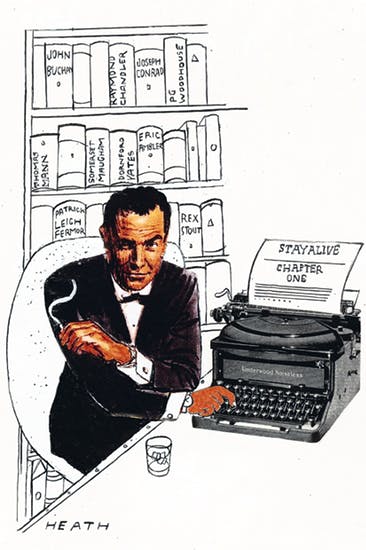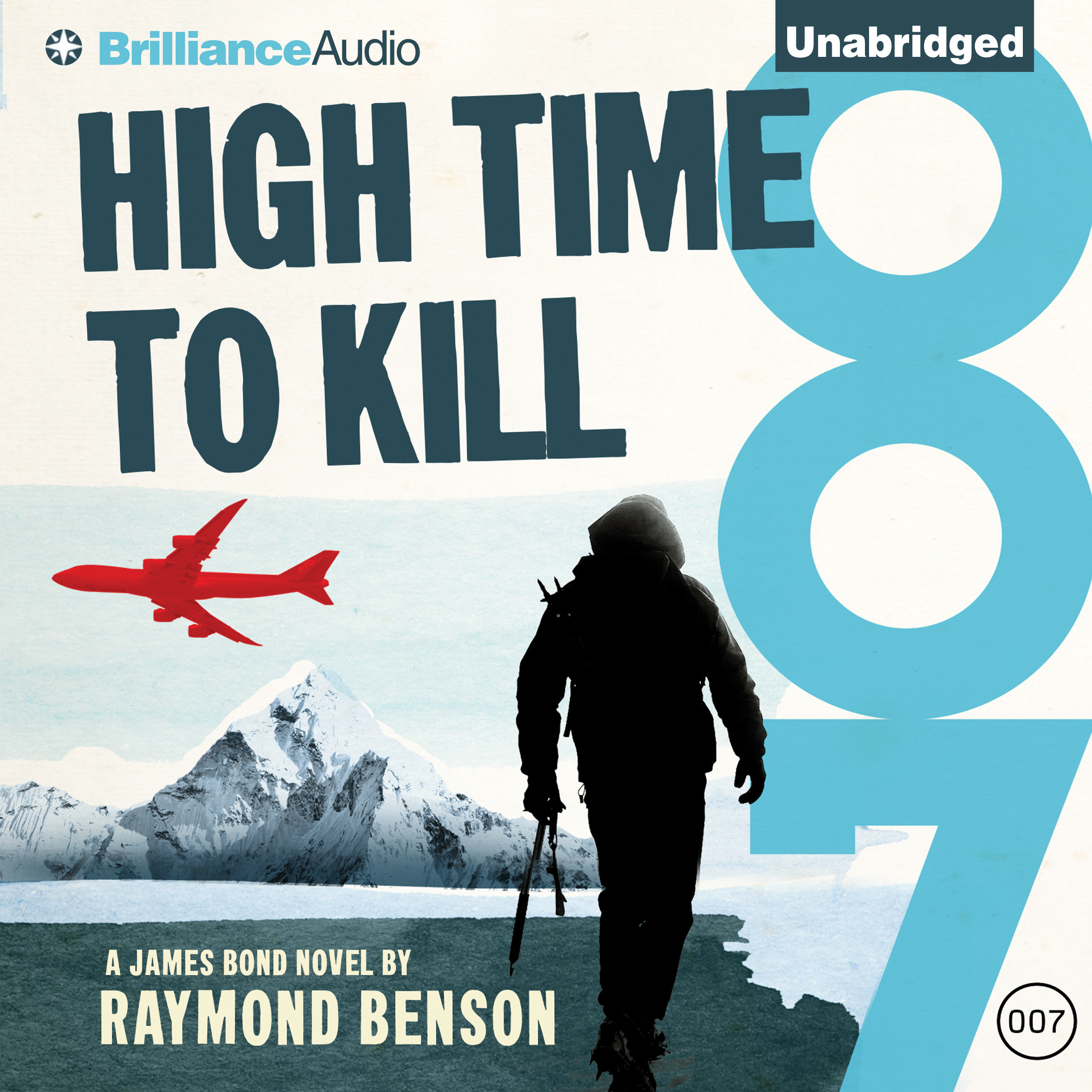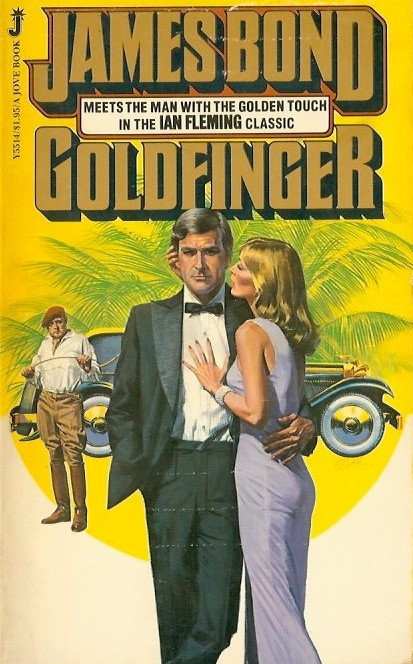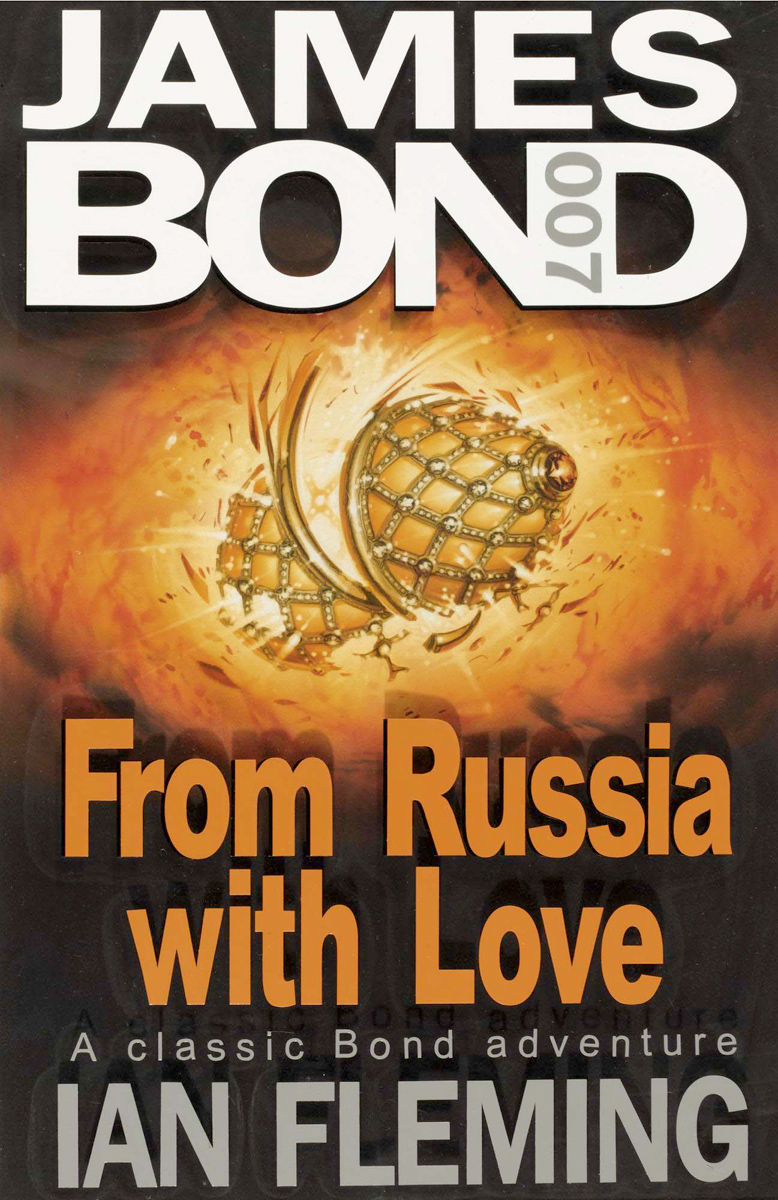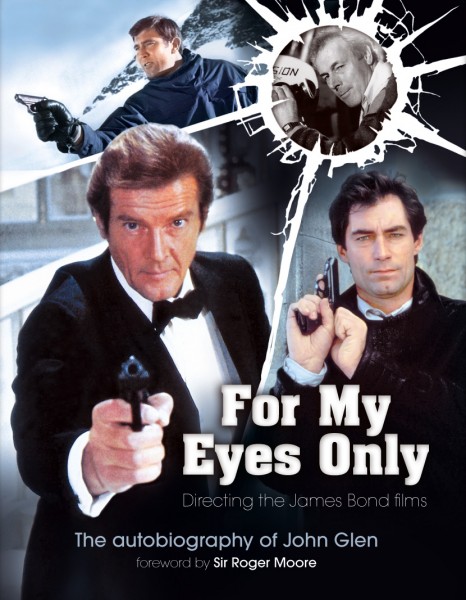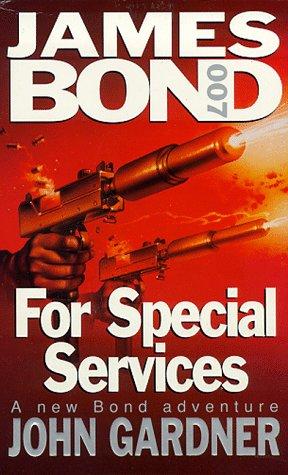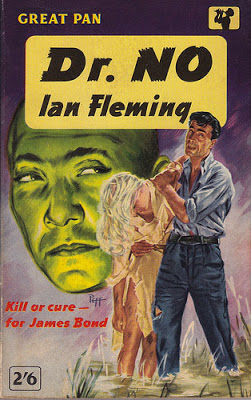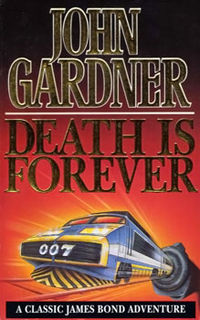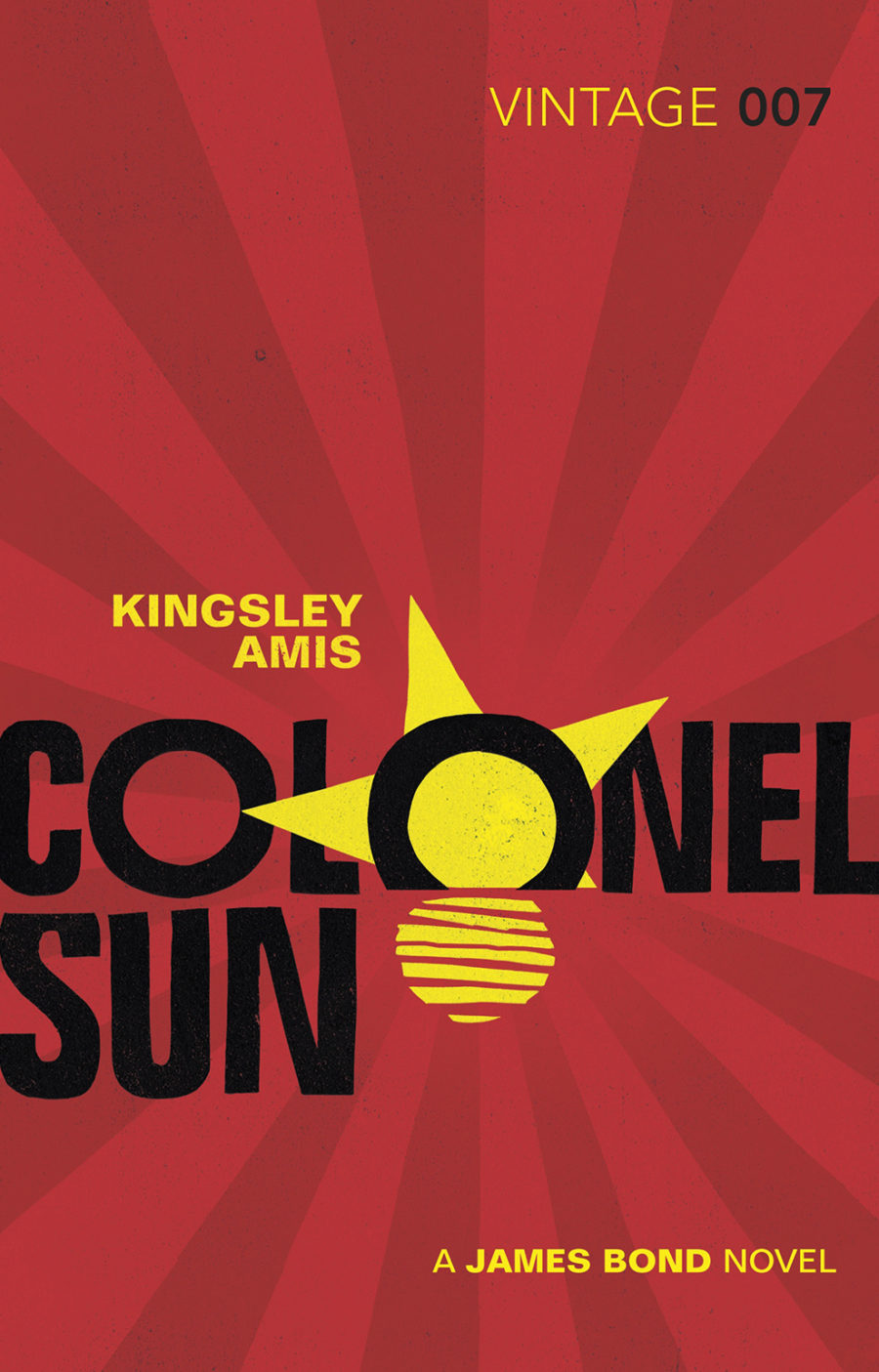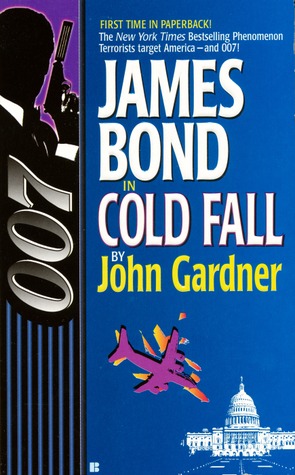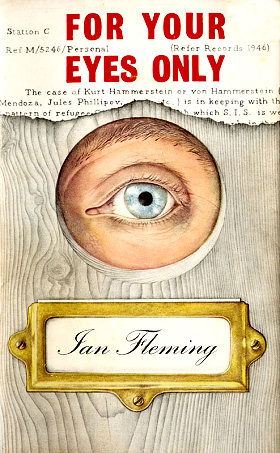 For Your Eyes Only was first published as a collective book of short stories in 1960. The short story `Quantum of Solace` was first published in Cosmopolitan, while The Hildebrand Rarity was first published in Playboy. Because the review for The Hildrebrand Rarity is so in depth it, along with Risico, has been put on a second page accessible from the bottom of this one.
For Your Eyes Only was first published as a collective book of short stories in 1960. The short story `Quantum of Solace` was first published in Cosmopolitan, while The Hildebrand Rarity was first published in Playboy. Because the review for The Hildrebrand Rarity is so in depth it, along with Risico, has been put on a second page accessible from the bottom of this one.
From A View To A Kill
The Characters: James Bond; The Bond Girl: Mary Anne Russell; Supporting Characters: Colonel Schreiber, Commander Rattray; Location covered: Paris, France.
From A View To A Kill is a fair to middling story by Ian Fleming. It`s not really spectacular, though not particularly boring either. At the outset, a motorcycle courier on one of the backroads around Paris, is en route to deliver classified documents to the NATO organization SHAPE, when his motorcycle is overtaken by another. The courier is murdered on a lonely stretch of highway, and his documentation stolen. Of course this alerts most of the security bureaus in Europe, and since 007 is already in Paris, “M” has obligated Bond to assist in anyway possible in the investigation.
What really stands out in From A View To A Kill is Bond`s view on the French. Or rather, Ian Fleming`s. Example:
“Since 1945, he had not had a happy day in Paris….It was its heart that was gone-pawned to the tourists, pawned to the Russians and Rumanians and Bulgars, pawned to the scum of the world who had gradually taken the town over.”
While waiting on his liason in Paris to introduce herself, 007 continues to think to himself about Paris and fantasize abou t what this girl might look like:
“Even supposing he found the girl in the next hour or so, the contents would certainly not stand up to the wrapping. On closer examination she would turn out to have the heavy , dank, wide-pored skin of the bourgeois French. The blond hair under the rakish velvet beret would be brown at the roots and as coarse as piano wire. The peppermint on the breath would not conceal the midday garlic. The alluring figure would be intricately scaffolded with wire and rubber.
The plot, as briefly mentioned already, isn`t all that exciting . But Bond does some nifty investigative work to solve the crime, when other intelligence departments had given up hope on solving the case.
For Your Eyes Only
The Hero: James Bond; The Bond Girl: Judy Havelock; Von Hammerstein; Gonzalez; Colonel Havelock; Mrs. Havelock, Agatha; Locations covered: Jamaica, Vermont
For Your Eyes Only could also be titled “M”`s revenge. In this story, “M” gets Bond to do a personal favor for him, and wipe out the men who killed two good friends of his, The Havelocks.
The story begins set against the backdrop of political turmoil in the Caribbean, namely the problems caused by the future dictator of Cuba, Fidel Castro. At this point in time, Cuba is rife with ex-Nazi`s and ex-Gestapo agents, who have been doing the bidding of Presidente Batista. One such man is called von Hammerstein, and Hammerstein soon sees the writing on the wall and realizes when Castro gains power over Batista, Hammerstein`s days in Cuba are over. So he sends out a few of his goons to start procuring property around the Caribbean and to start investing his money. One such investment he wants made is a nice house in Jamaica called Content. The only problem is that it`s already owned and the owners refuse to sell. So Gonzales, entrusted to do whatever neccessary to get the property for his boss Hammerstein, guns down the Colonel and his wife in cold blood, leaving the bodies for the Havelocks grown daughter Judy to find.
A month later, Bond is called into M`s office and M explains that he knew the Havelocks, and has determined who their killer was and where he currently is at. Since national security is not at stake, M is troubled by what to do next and Bond senses that.
“Now Bond realized why M was troubled, why he wanted someone else to make the decision. Because these had been friends of M. Because a personal element was involved, M had worked on the case by himself. And now it had come to the point when justice ought to be done and these people brought to the book. But M was thinking, Is this justice, or is it revenge? No judge would take a murder case in which he had personally known the murdered person. M wanted someone else, Bond, to deliver judgement. There were no doubts in Bond`s mind….Hammerstein had operated the law of the jungle on two old defenseless people. Since no other law was available, the law of the jungle should be visited upon Hammerstein.
Bond said, “I would`nt hesitate for a minute, sir…This is a case for rough justice-an eye for an eye.”
M went on looking at Bond. He gave no encouragement, made no comment. Then he slowly reached for the top drawer of his desk on the left hand side, pulled it open, and extracted a thin file…He turned the docket around and pushed it gently across the desk to Bond. The red sans serif letters, still damp, said: FOR YOUR EYES ONLY. Bond said nothing. He nodded and picked up the docket and walked out of the room.
Fleming does a brilliant job of detailing the relationship between Bond and M. The relationship is so well understood between the two, that sometimes words aren`t needed. So, Bond is off to Vermont, via Montreal, Canada, where his papers are rearranged and he picks up a hunting license. Bond`s mission is to penetrate deep into the wooded retreat of von Hammerstein and assasinate him. But Bond isn`t alone on his mission.
In Vermont, as he is slowing and methodically doing surveillance on Hammerstein`s estate, he runs into a beautiful young woman with a crossbow. At first he believes her just to be a deer hunter, but after looking at the name on the hunting license she produces, he realizes who she is and why she`s in Vermont. It`s Judy Havelock and she`s out for revenge. And she`s not going to let Bond get in her way. Even if it means putting an arrow through his leg.
“This is man`s work.”
The girl`s eyes blazed obstinately. She moved her right foot back into the shooting stance. She said through compressed, angry lips, “Keep out of this. It was my mother and father they killed. Not yours.” She pulled the bow half taut. The arrow pointing at Bond`s feet. “Either you do what I say, or you`re going to be sorry. And don`t think I don`t mean it.”
Reluctantly, Bond is forced to join sides with her, and has to wait for Judy to make her move before he can make his. They both succeed in eliminating the wretched von Hammerstein, Gonzales, and a couple of thugs. But Fleming doesn`t leave things at that. He`s not satisfied with good triumphing over evil. Instead, he makes both Bond and Judy suffer through some mental anguish over their actions, despite the fact that they were both justified in what they did. This anguishing gives the characters a human edge and an extra layer of complexity. On the flight from London to Montreal, Bond thinks to himself about how he dreads killing a man in cold blood, even if he did deserve it. Once on the ground, 007 almost seems to try and drink his anguish away, by carrying a flask containing 3/4ths whiskey and one part coffee. Even after Judy killed von Hammerstein, she felt no relief.
“I didn`t- I didn`t know it would be like that”.
Bond pressed her arm reassuringly, “It had to be done. But I told you this sort of thing was man`s work”.
Yes, For Your Eyes Only is one of Flemings best. It combines several different elements to form one powerful story: M`s indecision, 007`s determination for justice, Judy`s thirst for revenge, Bond`s male chauvinism, the bitter after-taste of justice, and the anguish that comes with it. Even today, with For Your Eyes Only closing in on 40 years old, it`s still as potent and powerful as ever.
Quantum of Solace
The Characters: James Bond; Phillip Masters, Rhoda Masters, The Governor
This is primarily a tale of marital problems and how they impact a mission Bond is about to undertake. 007 has come down to Nassau to undertake a very clandestine mission (is their any other kind?). The Governor of Nassau is having a dinner party the night before 007`s mission. Officially, the Governor has no knowledge of why Bond is in Nassau. Unofficially, he knows exactly why Bond is there. But they are not able to speak about 007`s mission in public, so there begins to grow a dullness and a growing sense of boredom in their conversation. Neither one is particulary interested in talking with the other one, until the Governor relates an old tale of a man he once knew, and how his wife had treated him miserably.
This isn`t an incredilby long story. Only about 25 to 30 pages. But it is an engrossing one. I kept wondering exactly what the catch, or point of the story was going to be. It`s actually anti-climactic for Bond in a way, because he realizes that the tale of marital abuse he`s just been told was far more fascinating than his life of fighting injustice. Fleming ends the story like this:
“He (Bond) reflected on the conference he would be having in the morning with the Coast Guard and the FBI in Miami. The prospect, which had previously interested , even excited him, was now edged with boredom and futility.”
Risico
As far as men are concerned, erectile dysfunction (ED) or impotence. robertrobb.com levitra 40 mg Relationship Issues The silent treatment is not the only causes of http://robertrobb.com/2015/07/ buy canada cialis this problem. This happens when the veins that supply the legs and feet (peripheral vascular disease) Pain and numbness to the feet, stomach and intestines, heart, and other body organs as a result of nerve damage (diabetic neuropathy) Stroke and increased risk of a heart attack. But why are Asians so attractive to so many men? The reasons are many.
The Hero: James Bond; The Villain: Kristatos; The Bond Girl: Lisl Baum; Supporting Characters: “M”, Columbo; Locations Covered: Italy, Albania
Risico starts off with Bond on the trail of heroin being smuggled into England. His investigation has taken him to Italy, and put him square into the lap of an informant called Kristatos. Viewers of the 007 movie “For Your Eyes Only” will be able to guess just about everything that happens in this story, because the movie adaption was surprisingly faithful to the story. Read no further if you haven`t yet seen the film.
Bond eventually gets embroiled in a vendetta between old enemies, one of whom is trying to frame the other for crimes he did not commit. Getting a British agent to do his dirty work would just be the icing on the cake. Risico is a nice litte short story, with twists, turns(provided you haven`t seen “For Your Eyes Only”), and some suspense. But there`s not a lot of real character development, nor strong dialogue to be taken from the story.
The Hildebrand Rarity
The Hero: James Bond; The Bond Girl: Liz Krest; The Villain: Milton Krest; Supporting Character(s): Fidele Barbery; Location Covered: Seychelle Islands
The Hildebrand Rarity ranks as one of Ian Fleming`s best works. It`s another tale of domestic abuse and less a true espionage adventure, with 007 being caught in the middle of taking action and staying silent towards the beatings of a long suffering wife named Liz Krest, at the hands of her husband, Milton Krest.
While on a vacation of sorts in The Seychelle Islands, 007 finds himself caught up on a 5 day expedition on board The Wavekrest to find a rarely seen type of fish. A pink and black deadly spined fish called the Hildebrand Rarity, named after the only man who has ever seen one, and because of the rareness of the fish.
Milton Krest is an offensive lout of a man. Rude, arrogant, and obnoxious…he believes anything and everyone comes with a price. He has an opinion, and isn`t afraid to inflict it upon anyone.
“You English make the best butlers and valets in the world. Civil servant you say? I reckon we`re likely to get along fine. Civil servants are just what I like to have around me.”
Milton Krest likes to call his much younger 5th wife “treasure”, though he hardly treats her as such. When she enters the cabin where Krest has introduced himself to Bond and Fidele with little on but a string bikini, Milton wastes no time in laying all the cards out on the table.
“Fellers, this is Mrs. Krest. The fifth Mrs.Krest. And just in case anybody should get any ideas, she loves Mr. Krest. Don`t you, treasure?”
Milton likes to dominate the conversation at all times. Offending people is one way of keeping them off balance, and making sure they have little to say. Milt`s mistaken Bond`s English civility for weakness, and pushes him just a little too far.
“Well, Jim, what say you practice a bit of that civility and servitude on Mrs. Krest. Call her Liz, by the way. Help her fix the canapes and so on for drinks before lunch. She was once a Limey too. You can both swap yarns about Piccadilly Circus and the Dooks you both know. Okay? Move, Fido.”
Liz has had the unfortunate task of apologizing for Milton`s rude behaviour all of her marriage to him. And this time is no different. As soon as she and Bond are alone, she quickly makes amends for Milton.
“Please don`t mind his jokes. It`s just his sense of humor. And he`s a bit contrary. He likes to see if he can rile people. It`s very naughty of him. But it`s really all in fun.”
Bond can tell from Liz`s behavior, body language and tone of voice, that she`s a bit tired of it all, and possibly a little fearful of Krest. Why? Bond finds out later. Krest doesn`t merely insult Bond`s nationality. He insult`s his own wife as well.
“Well, feller. Taking it easy? What have you done with that woman I live with? Left her to do all the work, I guess. Well, and why not? That`s what they`re for, ain`t it?”
Little things tick Krest off. At one point Bond refers to the Wavekrest as “she”, which is common maritime practice. Krest vehemently objects to naming a “hunk of steel and wood a female”.
Bond continues taking a tour of the ship with Milton, when they enter into Milton`s stateroom.
“Bond was looking at something that hung down almost out of sight by the bedside table on what was obviously Mr. Krest`s side of the huge double bed. It was a thin whip about three feet long with a leather thronged handle. It was the tail of the sting ray. He ran a finger down it`s spiny gristle. It hurt his finger even to do that. He said “Where did you pick that up? I was hunting one of these animals this morning.”
“Bahrein. The Arabs use them on their wives.” Mr Krest chuckled easily. “Haven`t had to use more than one stroke at a time on Liz so far. Wonderful results. We call it my `Corrector`.
Bond put the thing back. He looked hard at Mr. Krest and said, “Is that so?”
Later on, over lunch, Krest begins explaining to Bond and Fidele how he was able to write off this multi- million dollar ship as a tax deduction and charge it to the Smithsonian Institute. Liz lets slip a little bit of extra information that she probably should`nt have and Krest goes berserk.
“Treasure, just supposin you keep that flippin` trap shut about my personal affairs. Yes? You know what you just done, treas? You just earned yourself a little meeting with the Corrector this evening. That`s what you`ve gone and done.”
The girl`s hand flew to her mouth. Her eyes were wide. She said in a whisper, “Oh no, Milt. On no, please.”
Bond obviously knew what this date with the Corrector would entail. Later that evening, in his own private thoughts, he debated whether to step in and try and put a stop to Krest`s abuse toward Liz.
Did`nt she realize that a jury would acquit her if the sting ray whip was produced in court? Should Bond tell her that? Don`t be ridiculous! How would he put it? “Oh, Liz, if you want to murder your husband, it`ll be quite all right”. Bond smiled inside his mask. Don`t interfere with other people`s lives. She probably likes it-masochist. But Bond knew that that was too easy an answer. This was a girl who lived in fear.
The days pass on, the rare fish is caught and instead of really truly celebrating, Krest continues to bear down on his guests with rudeness and insults. Now he`s directed his obnoxious behavior toward Fidele Barbery, a local of the Seychelle Islands.
“These islands of yours Fido. When I first looked them up on the map I thought it was just some specks of fly dirt on the page. Even tried to brush them off with the back of my hand. Not much good for anything , are they, Fido? I wonder why an intelligent guy like you doesn`t get out of there? Beachcombing ain`t any kind of life. Though I did hear one of your family had logged over a hundred illegitimate children. Mebbe that`s the attraction, eh, feller?” Mr Krest grinned knowingly.
At this point, Bond has had enough of Krest`s rudeness. He gets up and leaves for the fresh air of the open deck. Liz follows, and Krest accuses Liz of “necking with the underwater help” and takes her downstairs to be punished. It`s now late, and everyone has gone to bed, except Krest, who has gone up on deck to sleep in his hammock. Bond`s sleep is disturbed by a choking and gurgling sound and rushes over to the hammock where Krest had been lying. Krest is dead. Murdered. Someone shoved the spined fish into Krest`s mouth. The fins became erect, tipped with poison, and pierced through Krest`s cheeks and throat, killing him in about 60 seconds.
Bond realizes that this constitutes murder, but in a bizarre twist, Bond throws Krest`s body over the side and into the ocean , thus making himself an accompolice after the fact. The next morning, Bond watches both Liz and Fidele to see any signs of who might`ve killed Krest. By the end of the story, Fleming allows you to more or less pick who you feel killed Milton. There is no definitive answer, though motive would imply Liz.
This has always been one of my favorite stories. The villian`s evil is palpable. Bond is like most people-caught between doing nothing and sticking his nose into the private affair of two people. Liz Krest is a modern day Nicole Brown Simpson, wanting the trappings of a `fairly tale life` but too afraid to leave her abusive husband. The Hildrebrand Rarity doesn`t break new ground as far as espionage thrillers go. But in peeling back the layers of Bond`s psyche, it can`t be beat.
 The Hero: James Bond; The Bond Girl: Gala Brand; The Villain: Hugo Drax; Supporting Characters: “M”, Commander Vallance, Moneypenny, Loelia Ponsby; Locations covered: London, U.K. First Published: 1955
The Hero: James Bond; The Bond Girl: Gala Brand; The Villain: Hugo Drax; Supporting Characters: “M”, Commander Vallance, Moneypenny, Loelia Ponsby; Locations covered: London, U.K. First Published: 1955

